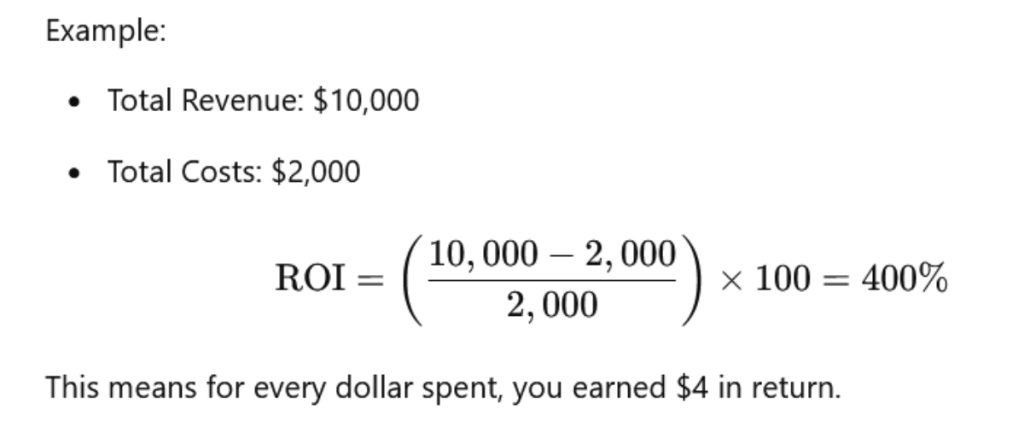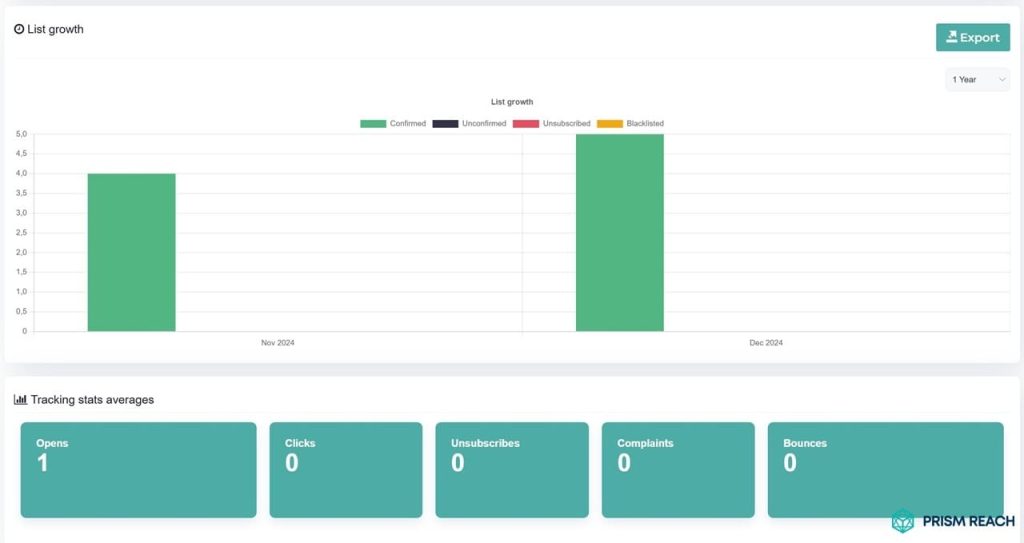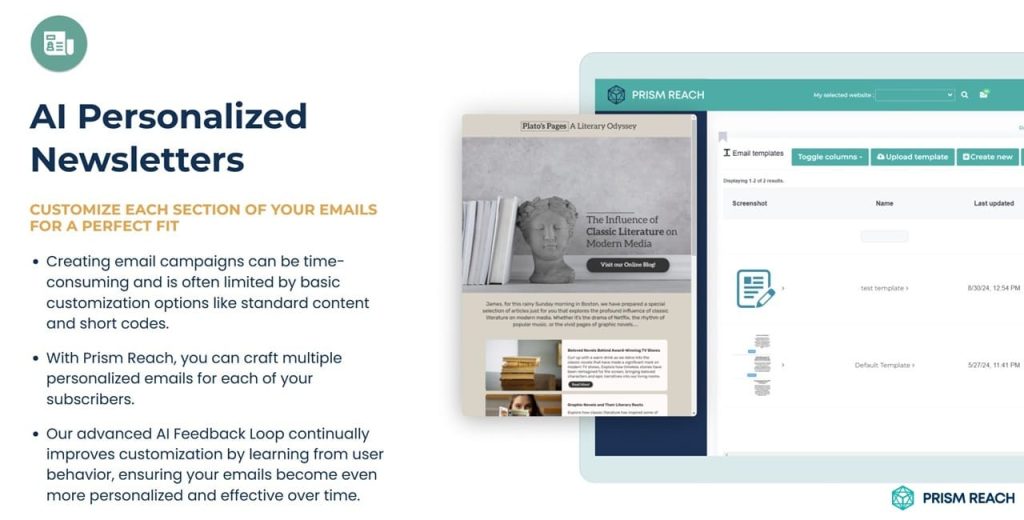In the ever-evolving landscape of digital marketing, email campaigns remain a cornerstone of effective customer engagement. However, the true measure of success lies not just in open rates or click-throughs, but in the tangible return on investment (ROI) these campaigns generate. Understanding how to calculate ROI in email marketing is crucial for businesses looking to justify their marketing spend and optimize their strategies in an increasingly competitive digital arena.
As we navigate through 2025, the importance of email marketing ROI has never been more pronounced. With the global email marketing market projected to reach $17.9 billion by 2027, according to Statista, marketers are under increasing pressure to demonstrate the value of their email initiatives. This article will guide you through the intricacies of ROI calculation, providing you with the tools to not only measure but also maximize the impact of your email marketing efforts.
Additionally, innovative solutions like Prism Reach are emerging to complement these strategies, offering specialized tools for deep personalization and enhanced engagement. This article will explore proven tactics and hidden gems that can significantly enhance your ability to calculate and improve ROI in your email marketing campaigns.
Key Facts
- The basic formula for calculating email marketing ROI is: ROI = (Gain from Investment – Cost of Investment) / Cost of Investment × 100
- According to the Data & Marketing Association, email marketing has an average ROI of $42 for every $1 spent, making it one of the most effective marketing channels.
- Implementing personalization in email campaigns can increase ROI by up to 760%, as reported by Campaign Monitor.
- Advanced analytics and tracking can provide deeper insights, enhancing the accuracy of ROI calculations.
- Tools like Prism Reach leverage AI to streamline ROI tracking and optimization, leading to more informed marketing decisions.

Demystifying Email Marketing ROI Calculation
Calculating email marketing ROI is a critical process that requires a comprehensive understanding of both the costs and revenues associated with your campaigns. This multifaceted approach involves several key steps, each contributing to a more accurate and insightful ROI calculation.
1. Understand the ROI Formula
The foundation of ROI calculation lies in the basic formula:
ROI (%) = [(Gain from Investment – Cost of Investment) / Cost of Investment] × 100
This formula provides a clear percentage that represents the effectiveness of your email campaign in generating revenue relative to its cost. Understanding this formula is crucial as it forms the basis of all your ROI calculations. By consistently applying this formula across your campaigns, you can track your progress over time and compare the effectiveness of different strategies.

2. Define Your Conversion Goal
Before diving into calculations, it’s essential to clearly identify what constitutes a “conversion” for your specific campaign. This step is crucial as it determines what actions you’ll be tracking and measuring. Common conversion goals in email marketing include:
- Making a purchase
- Signing up for an event
- Downloading a file
- Filling out a form
However, your specific goals may vary depending on your business objectives and the nature of your campaign. Being precise in your definition ensures that you’re measuring the right actions and gathering relevant data, which is essential for calculating an accurate and useful ROI.
3. Gather Accurate Data
Collecting precise data is crucial for an accurate ROI calculation. You’ll need two key pieces of information: the number of delivered emails and the number of conversions.
- Number of Delivered Emails: Subtract any bounced emails from the total emails sent. For example, if you sent 10,000 emails and 500 bounced, your number of delivered emails would be 9,500.
- Number of Conversions: Track how many recipients performed the desired action. If your goal was purchases and 250 recipients made a purchase, your number of conversions is 250.
Accuracy in this data collection is paramount, as even small errors can significantly skew your results. Consider using email marketing platforms or analytics tools to help automate this data collection process and ensure precision.
4. Calculate the ROI
Now that you have your data, it’s time to apply the ROI formula. Using the example numbers from the previous step, let’s calculate:
ROI (%) = [(250 × Average Purchase Value) – Total Campaign Cost] / Total Campaign Cost × 100
Assuming an average purchase value of $100 and a total campaign cost of $2,500:
ROI (%) = [(250 × $100) – $2,500] / $2,500 × 100 = 900%
This percentage represents the return you achieved relative to the investment made in the campaign. It’s important to perform this calculation consistently for all your campaigns to allow for accurate comparisons. When interpreting this result, remember that what constitutes a “good” ROI can vary widely depending on your industry, audience, and specific campaign goals. Instead of fixating on industry benchmarks, focus on tracking your own progress over time.

7. Optimize for Higher ROI
Use the insights gained from your calculations and analysis to improve future campaigns. Focus on optimizing several key areas:
- Subject Lines: Work on your subject lines to increase open rates. Experiment with different styles, lengths, and personalization techniques.
- Call-to-Action (CTA) Buttons: Ensure your CTAs are clear, compelling, and easy to click, especially on mobile devices.
- Email Design: Aim for mobile-friendliness and visual appeal. Consider the layout, use of images, and overall aesthetic to create an engaging experience.
- Audience Targeting: Refine your audience targeting for more relevant messaging using the segmentation insights you’ve gained.
By consistently applying these optimization techniques and measuring their impact on your ROI, you can continually improve your email marketing performance and achieve better results over time.
Hidden Gems: Enhancing Your ROI Calculation and Improvement
While the foundational strategies provide a solid approach to calculating and improving your email marketing ROI, integrating lesser-known tactics can offer substantial advantages. Here are five hidden gems that can significantly enhance your effectiveness in this area:
1. Implement Multi-Touch Attribution
Strategy: Use multi-touch attribution models to track the various touchpoints a customer interacts with before converting, rather than just the last interaction.
Potential Effectiveness: This provides a more accurate picture of how email campaigns contribute to conversions over time, leading to better-informed marketing decisions.
Level of Obscurity: High; many marketers focus solely on last-click attribution, missing the broader impact of their campaigns.
Ease of Implementation: Moderate; requires setting up tracking and analytics tools that support multi-touch attribution.
Uniqueness: Offers a comprehensive view of customer journeys, allowing for more effective resource allocation across channels.
Benefits of Multi-Touch Attribution:
- Provides a holistic understanding of the customer journey.
- Enables more accurate allocation of marketing resources.
- Identifies which touchpoints are most influential in driving conversions.
2. Calculate Customer Lifetime Value (CLV)
Strategy: Incorporate Customer Lifetime Value (CLV) into your ROI calculations to assess the long-term value generated by email subscribers.
Potential Effectiveness: Understanding CLV helps justify marketing spend and demonstrates the true value of retaining customers acquired through email campaigns.
Level of Obscurity: Moderate; while CLV is a well-known metric, its integration into email ROI calculations is often overlooked.
Ease of Implementation: Moderate; requires tracking customer purchase behavior over time but can be automated with CRM tools.
Uniqueness: Focuses on long-term profitability rather than just immediate returns, enhancing strategic planning.
Benefits of Calculating CLV:
- Provides insight into the long-term value of each subscriber.
- Helps in making informed decisions about customer acquisition and retention strategies.
- Enables more accurate ROI calculations by accounting for future revenue streams.
3. Use Cohort Analysis
Strategy: Conduct cohort analysis to evaluate the performance of different subscriber groups based on their sign-up date or behavior.
Potential Effectiveness: This allows you to identify trends and patterns in engagement and conversion rates over time, helping refine your targeting strategies.
Level of Obscurity: High; many marketers do not utilize cohort analysis in their email marketing efforts.
Ease of Implementation: Moderate; requires data segmentation and analysis but can provide valuable insights.
Uniqueness: Offers a deeper understanding of subscriber behavior and campaign effectiveness across different audience segments.
Benefits of Cohort Analysis:
- Identifies how different subscriber groups engage with your emails over time.
- Reveals trends and patterns that can inform future campaign strategies.
- Helps in tailoring content and offers to specific cohorts for better performance.

4. Track Engagement Metrics Beyond Opens and Clicks
Strategy: Monitor additional engagement metrics such as forward rates, social shares, and time spent reading emails to gain insights into subscriber interest.
Potential Effectiveness: These metrics can indicate how well your content resonates with your audience, informing future campaign strategies and improving ROI.
Level of Obscurity: High; most marketers focus primarily on open and click rates, neglecting other valuable engagement indicators.
Ease of Implementation: Moderate; requires setting up tracking for additional metrics but is feasible with advanced analytics tools.
Uniqueness: Provides a holistic view of engagement that goes beyond basic metrics, enhancing understanding of audience preferences.
Benefits of Tracking Advanced Engagement Metrics:
- Gives a more comprehensive view of how subscribers interact with your emails.
- Identifies content and design elements that drive deeper engagement.
- Helps in refining email strategies to better align with subscriber interests.
5. Calculate Incremental Revenue
Strategy: Measure incremental revenue generated specifically from email campaigns by comparing sales data before and after sending emails to gauge their direct impact on revenue growth.
Potential Effectiveness: This approach provides clear evidence of how much revenue is directly attributable to your email efforts, allowing for precise ROI calculations.
Level of Obscurity: High; many marketers do not isolate revenue impacts from specific channels effectively when calculating overall ROI.
Ease of Implementation: Moderate; requires careful tracking and analysis but is essential for accurate ROI assessments over time.
Uniqueness: Focuses on isolating the effects of email marketing within broader sales data, providing clarity on its true value within an organization’s marketing mix.
Benefits of Calculating Incremental Revenue:
- Provides a clear measure of the direct financial impact of email campaigns.
- Helps in justifying marketing spend by demonstrating tangible returns.
- Enables more accurate forecasting and budgeting based on email campaign performance.
Integrating Hidden Gems into Your Strategy
To fully leverage the capabilities of Zendesk, HubSpot, SendGrid, Mailchimp, and Prism Reach, consider integrating these hidden gems into your email marketing strategy. Here are some practical ways to do so:
- Implement Multi-Touch Attribution: Use Prism Reach’s advanced attribution tools to track multiple touchpoints, providing a comprehensive view of how your email campaigns contribute to conversions.
- Calculate Customer Lifetime Value (CLV): Leverage Prism Reach’s CLV tracking features to understand the long-term value of your subscribers, informing your ROI calculations and marketing strategies.
- Use Cohort Analysis: Utilize Prism Reach’s cohort analysis tools to segment your audience and analyze the performance of different subscriber groups over time.
- Track Engagement Metrics Beyond Opens and Clicks: Integrate Prism Reach’s advanced analytics to monitor additional engagement metrics, offering deeper insights into subscriber behavior.
- Calculate Incremental Revenue: Employ Prism Reach’s revenue tracking capabilities to measure the incremental revenue generated from your email campaigns accurately.
Practical Tips for Maximizing Your ROI
To fully leverage the capabilities of Zendesk, HubSpot, SendGrid, Mailchimp, and Prism Reach, consider the following practical tips:
- Leverage AI-Powered Personalization: Use Prism Reach’s AI-driven content recommendations to tailor your emails to individual subscriber preferences, increasing the likelihood of conversions.
- Optimize Tracking and Reporting: Utilize Prism Reach’s advanced tracking features to ensure accurate data collection and comprehensive reporting, making ROI calculations more precise.
- Automate Data Collection: Implement automation workflows in Prism Reach to streamline the collection of conversion data and reduce manual tracking efforts.
- Integrate Comprehensive Analytics: Combine the reporting capabilities of Zendesk or HubSpot with Prism Reach’s detailed engagement metrics to gain a holistic view of your ROI performance and make data-driven decisions.
- Enhance Lead Qualification: Use advanced segmentation models in HubSpot alongside Prism Reach’s user avatars to prioritize high-potential leads, improving engagement and conversion rates.
By integrating these tips into your marketing strategy, you can create a more cohesive and effective approach that leverages the strengths of each platform and tool, ultimately driving better results and higher ROI.
Innovative Solutions by Prism Reach
While understanding how to calculate ROI is crucial, maximizing it requires sophisticated tools and strategies. This is where Prism Reach comes into play. Our AI-powered SaaS solution is designed to enhance every aspect of your email marketing campaigns, from personalization to timing optimization.
Benefits of Prism Reach:
- Advanced Analytics and Multi-Touch Attribution: Prism Reach’s AI-driven attribution models provide a comprehensive view of how your email campaigns contribute to conversions across multiple touchpoints, ensuring more accurate ROI calculations.
- Automated Tracking and Reporting: With Prism Reach, tracking conversions, CLV, and incremental revenue becomes seamless. Automated reporting features save time and reduce the risk of manual errors, allowing you to focus on strategy and optimization.
- Enhanced Personalization Leading to Higher CLV: Prism Reach leverages AI to deliver hyper-personalized content, increasing subscriber engagement and lifetime value, which directly boosts your ROI.

How Prism Reach Enhances Your ROI Optimization:
- AI-Powered Personalization: Uses sophisticated algorithms to tailor content and incentives based on each subscriber’s preferences and behaviors, increasing the relevance and effectiveness of your emails.
- Dynamic Content Selection: Automatically adjusts email content and incentives based on real-time data, ensuring that each email is as relevant and engaging as possible.
- Advanced Analytics: Provides deep insights into subscriber behaviors and preferences, allowing for continuous optimization of your email marketing strategies and more accurate ROI calculations.
Prism Reach’s core functionality revolves around its proprietary AI technology, which analyzes vast amounts of data to create detailed user avatars. This enables personalized email experiences that cater specifically to individual preferences, making the process more engaging and effective. The system’s ability to dynamically adjust content and incentives based on real-time data ensures that your ROI optimization efforts are both efficient and highly targeted.
Upgrade Your Email Marketing with AI Personalization!
Conclusion
Calculating and optimizing email marketing ROI is a critical skill in today’s data-driven marketing landscape. By following a systematic approach to tracking revenue, identifying costs, and analyzing performance metrics, marketers can gain valuable insights into the effectiveness of their email campaigns.
Remember, the goal isn’t just to calculate ROI but to use this information to continuously refine and improve your strategies. With tools like Prism Reach at your disposal, you’re well-equipped to not only measure but significantly enhance your email marketing ROI, ensuring your campaigns deliver maximum value for your business.
Sources
- HubSpot. (n.d.). How to Calculate Email Marketing ROI. Retrieved from https://www.hubspot.com/marketing-statistics
- GetResponse. (n.d.). Understanding Email Marketing ROI. Retrieved from https://www.getresponse.com/blog/email-marketing-roi